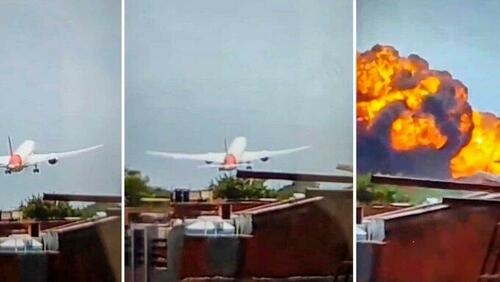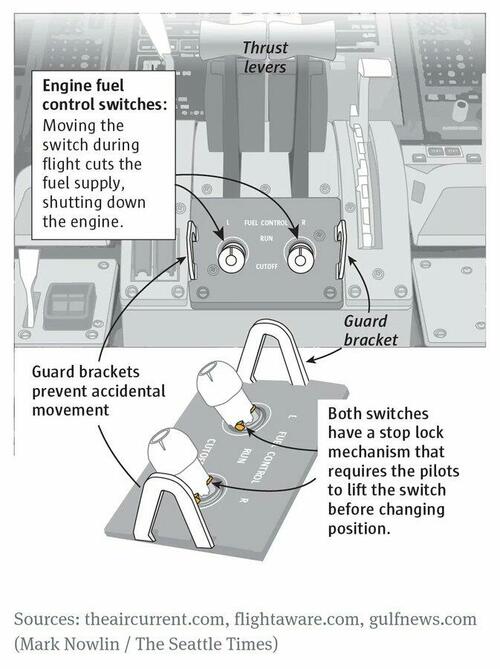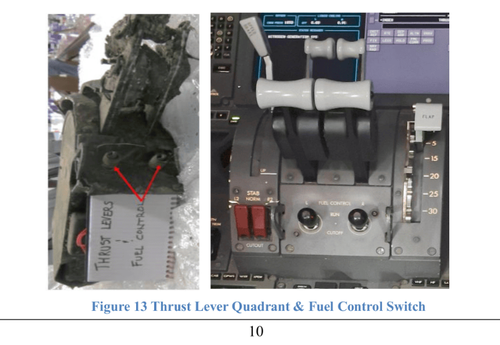
Air India Crash: Fuel Switches On Boeing 787 „Cutoff” During Takeoff
Just one month ago—and days before the Paris Air Show—a horrific crash involving Air India Flight 171, a Boeing 787 Dreamliner, was captured on CCTV. The footage showed the widebody aircraft taking off down a runway in the western Indian city of Ahmedabad, but shortly after rotation, it suddenly lost altitude and crashed into a residential area, sparking all sorts of speculation about what may have caused the crash that killed 260 people. Since then, Indian authorities have remained largely silent—until now.
A newly released preliminary report may finally shed light on what went wrong. Spoiler alert: it’s great news for Boeing. Early findings suggest the mid-air disaster was not due to a mechanical flaw in the engines, but likely the result of human error.

On Saturday, India’s Air Accident Investigation Bureau released a report revealing that the fuel control switches on the Boeing 787 were set to „cutoff” just seconds after takeoff, explaining why the widebody jet failed to gain sufficient lift after rotation, as thrust could not be produced with Jet A fuel supply cut off.
„The aircraft achieved the maximum recorded airspeed of 180 Knots IAS at about 08:08:42 UTC and immediately thereafter, the Engine 1 and Engine 2 fuel cutoff switches transitioned from RUN to CUTOFF position one after another with a time gap of 01 sec. The Engine N1 and N2 began to decrease from their takeoff values as the fuel supply to the engines was cut off,” the report read.

The report continued, „In the cockpit voice recording, one of the pilots is heard asking the other why did he cutoff. The other pilot responded that he did not do so.”

By the time the one pilot realized the fuel had been cut off and flipped the switches back to „run,” it was too late. Although the engines began relight sequences, the aircraft had already reached its peak speed of 180 knots at just a few hundred feet of altitude—leaving no time for trust recovery.
More details from the report:
As perthe EAFR, the Engine 1 fuel cutoff switch transitioned from CUTOFF to RUN at about 08:08:52 UTC. The APU Inlet Door began opening at about 08:08:54 UTC, consistent with the APU Auto Start logic. Thereafter at 08:08:56 UTC the Engine 2 fuel cutoff switch also transitions from CUTOFF to RUN. When fuel control switches are moved from CUTOFF to RUN while the aircraft is inflight, each engines full authority dual engine control (FADEC) automatically manages a relight and thrust recoverysequence of ignition and fuel introduction.
The EGT was observed to be rising for both engines indicating relight. Engine 1’s core deceleration stopped, reversed and started to progress to recovery. Engine 2 was able to relight but could not arrest core speed deceleration and re-introduced fuel repeatedly to increase core speed acceleration and recovery. The EAFR recording stopped at 08:09:11 UTC.
At about 08:09:05 UTC, one of the pilots transmitted „MAYDAYMAYDAY MAYDAY”.
The report does not explain why the switches were flipped and points to no mechanical issues or bird strike. It does, however, suggest a focus on the pilots’ actions. The first officer was flying at the time.
As we’ve previously noted, this marks the first-ever hull loss of a Boeing 787 Dreamliner since the aircraft entered service in 2011.
At the Paris Air Show, one of the aerospace industry’s biggest events, held about a week after the crash, Boeing kept a low profile while the investigation into Flight 171 was ongoing.
Shawn Pruchnicki, a former airline accident investigator and aviation expert at Ohio State University, told The New York Times: „For example, on the 787 and probably more airliners these days, the switches themselves — you can’t shut them off without actually lifting them up. So there’s a little mechanical gate built into the switch — you have to lift it up over this little gate. So you can’t just bump it.”
The good news for Boeing is that the investigation is pointing toward human error as the contributing factor in the crash.
* * *
Read The Full Report:
Tyler Durden
Sat, 07/12/2025 – 16:55

 4 miesięcy temu
4 miesięcy temu






![Powody do niepokoju Viktora Orbána: opozycja rośnie, a sojusze słabną [WYWIAD]](https://cdn.oko.press/cdn-cgi/image/fit=cover,width=580,height=260,quality=75/https://cdn.oko.press/2025/11/AFP__20250922__76D97U3__v1__MidRes__HungaryPoliticsParliamentOrban.jpg)






